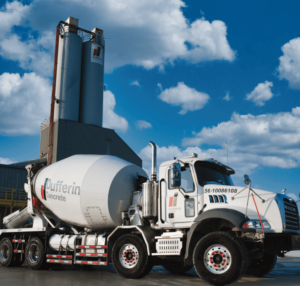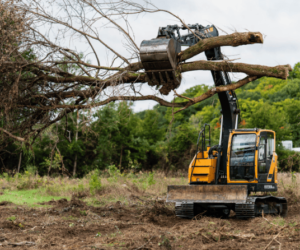Super Seeder Subsidy: Government Support for Efficient Agricultural Machinery Usage
Agriculture has always been the backbone of many economies, especially in countries like India, where a large portion of the population depends on farming. However, the sector has faced significant challenges, such as labor shortages, inefficiency, and the increasing cost of inputs. To address these challenges, the government has introduced various schemes and subsidies. One of the most notable is the super seeder subsidy. This initiative helps farmers acquire advanced agricultural machinery to improve their productivity and sustainability.
In this article, we’ll dive deep into the concept of the super seeder subsidy, explaining its benefits, how it works, and real-world examples of its impact.
What is the Super Seeder?
Before understanding the super seeder subsidy, it’s important to know what a super seeder is. A super seeder is a sophisticated piece of agricultural equipment designed to manage crop residue efficiently. It is used for sowing seeds while simultaneously managing the stubble from previous crops. This makes it an effective solution for crop residue burning, which is a major environmental issue.
How Does a Super Seeder Work?
The super seeder works by planting seeds in the soil while simultaneously cutting and spreading crop residue evenly. This machine ensures that the soil is covered and compacted properly, improving the seed-to-soil contact. The result is healthier soil and better crop yields.
The Need for Super Seeder Subsidy
Farming in India is primarily dependent on traditional practices, which often lead to inefficient use of resources. Crop residue burning is a major environmental concern, as it contributes to air pollution. The introduction of machines like the super seeder has the potential to revolutionize the sector by addressing this issue.
However, the high cost of these machines makes it difficult for small-scale farmers to adopt them. This is where the super seeder subsidy plays a critical role. By offering financial assistance, the government encourages farmers to invest in such technology, thereby enhancing their productivity and reducing the environmental impact.
What is the Super Seeder Subsidy?
The super seeder subsidy is a government initiative that provides financial assistance to farmers for purchasing super seeder machines. This subsidy aims to make the technology affordable for farmers, especially those in rural areas who otherwise might not have the resources to invest in it.
Key Features of the Seeder Subsidy:
- Financial Assistance: The subsidy reduces the overall cost of the super seeder, making it accessible to farmers.
- Government Support: The scheme is part of the government’s broader efforts to promote sustainable farming practices.
- Reduced Environmental Impact: By using the super seeder, farmers can manage crop residue effectively, reducing the harmful effects of residue burning.
- Improved Productivity: The use of advanced machinery ensures better soil health and higher crop yields.
Eligibility Criteria for the Super Seeder Subsidy
While the subsidy is a great initiative, not all farmers are eligible to benefit from it. The eligibility criteria for the super seeder subsidy generally include:
- Farm Size: Farmers must typically have a certain amount of land to qualify for the subsidy.
- Residency: The subsidy is often available for farmers living in specific regions, especially those affected by crop residue burning.
- Income Limits: Some subsidies are targeted towards farmers from economically weaker sections, ensuring they get the support they need.
How to Apply for the Seeder Subsidy?
Applying for the super seeder subsidy is a simple process, but it varies from state to state. Generally, farmers need to follow these steps:
- Contact the Agricultural Department: Visit the local agricultural department or the official website to find the application form.
- Fill in the Required Information: Complete the form with details about the farm, crop history, and land area.
- Submit Documents: Provide necessary documents such as land records, identity proof, and income details.
- Approval Process: Once the application is submitted, it will be reviewed, and if approved, the subsidy will be disbursed.
- Purchase the Machine: After receiving the subsidy, farmers can purchase the super seeder from authorized dealers.
Real-World Example: Success of the Super Seeder Subsidy in Punjab
In Punjab, the seeder subsidy has seen widespread success. The state has long struggled with the issue of stubble burning, which has caused severe air pollution. The introduction of the subsidy has led to an increase in the adoption of super seeders by farmers.
For instance, in 2020, the government of Punjab reported that more than 10,000 farmers had benefited from the subsidy, which significantly reduced stubble burning incidents. The machines not only helped manage the residue but also improved soil health and increased crop yields.
Benefits of the Super Seeder Subsidy
- Environmental Benefits: The most significant benefit of the seeder subsidy is the reduction in stubble burning, which in turn lowers air pollution.
- Economic Growth: By improving farm productivity, farmers can achieve better yields, leading to increased income.
- Sustainability: The use of the super seeder ensures sustainable farming by maintaining soil health and promoting efficient use of resources.
- Job Creation: The adoption of modern agricultural machinery can create jobs in manufacturing, repair, and maintenance sectors.
Challenges in Implementing the Super Seeder Subsidy
Despite its success, there are some challenges in the implementation of the seeder subsidy:
- Awareness: Many farmers are unaware of the subsidy or do not know how to apply for it.
- Cost of Maintenance: While the subsidy covers the purchase cost, the maintenance of the machines can be expensive.
- Limited Coverage: In some areas, the subsidy is not available, or it may not be enough to cover the entire cost of the machinery.
Future of the Super Seeder Subsidy
The seeder subsidy is a positive step towards making farming more sustainable. Moving forward, it is expected that the government will expand the reach of the subsidy and provide better support to farmers, particularly in rural and underserved regions.
The future could also see technological advancements in super seeder machines, making them more affordable and efficient. With the right support and education, the seeder subsidy has the potential to revolutionize Indian agriculture.
Conclusion
In conclusion, the seeder subsidy is a vital government initiative aimed at improving agricultural productivity and reducing environmental harm. By offering financial support for purchasing advanced machinery, the government is empowering farmers to embrace modern farming practices. As more farmers adopt super seeders, the long-term benefits will include better crop yields, improved soil health, and a reduction in the harmful effects of stubble burning.














Post Comment